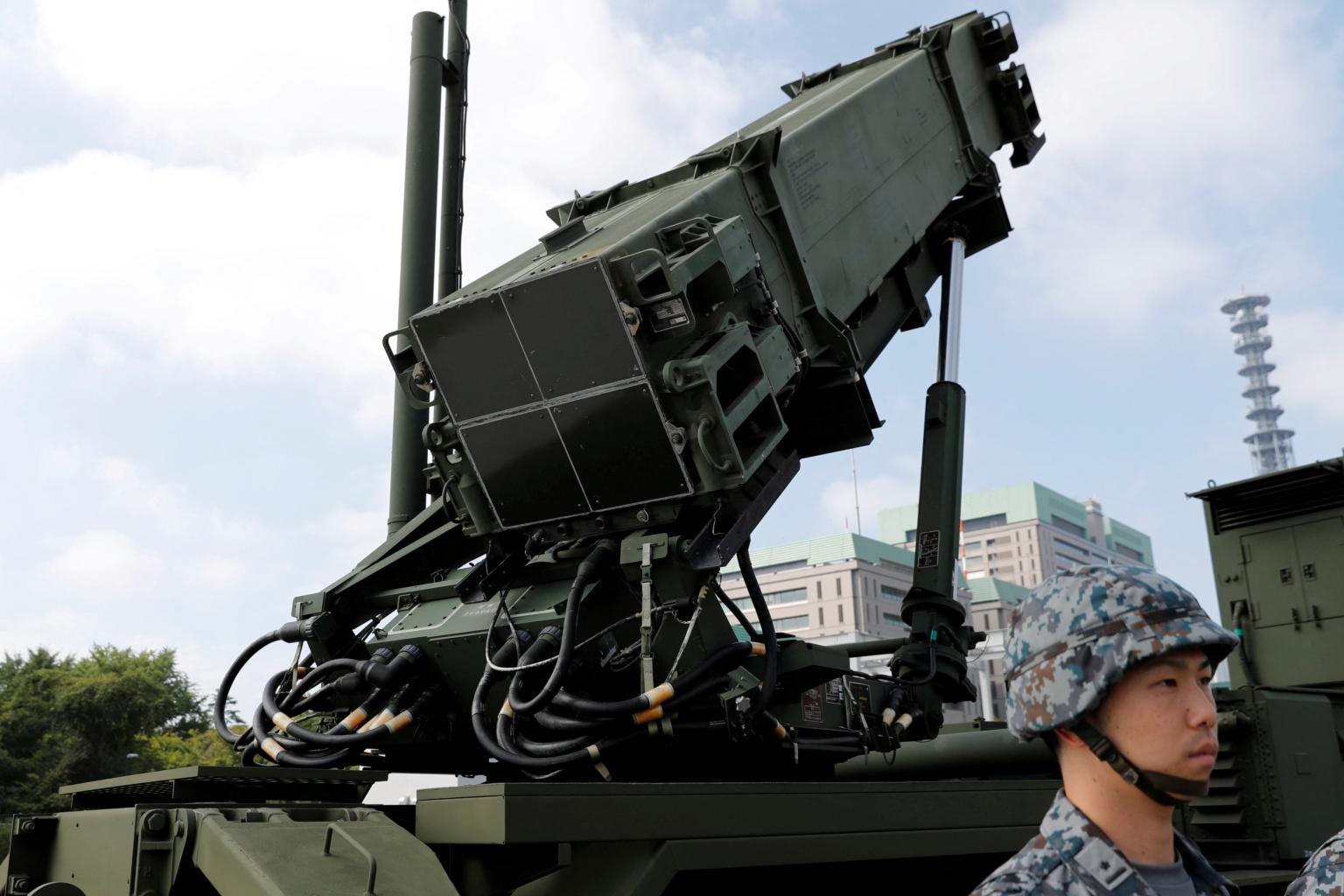Japan plans to develop longer-range missiles to counter China, Russia
Sign up now: Get ST's newsletters delivered to your inbox

The ministry did not give a range for the proposed weapons, or say how many it planned to field.
PHOTO: REUTERS
Follow topic:
TOKYO (REUTERS) - Japan will develop and mass produce a cruise missile and a high-velocity ballistic missile, it said on Wednesday (Aug 31), as it seeks the ability to strike more distant targets as part of a military expansion aimed at meeting threats from China and Russia.
The procurement plan unveiled in the Ministry of Defence's annual budget request represents a clear departure from a decades-long range limit imposed on Japan's constitutionally constrained Self-Defence Forces, which meant they could only field missiles with ranges of a few hundred kilometres.
"China continues to threaten to use force to unilaterally change the status quo and is deepening its alliance with Russia," the ministry said in its budget request.
"It is also applying pressure around Taiwan with supposed military exercises and has not renounced the use of military force as a way to unite Taiwan with the rest of China," it said.
Alarm about China's regional ambitions grew this month after it reportedly fired five ballistic missiles into waters less than 160km from Japan in a show of force after US House of Representatives Speaker Nancy Pelosi visited Taiwan.
China noted on Tuesday that in recent years, Japan has been going further down the path of military expansion and strengthening military cooperation with the United States, as well as seeking to develop counterstrike capabilities.
"Some in Japan are even clamouring for nuclear-sharing with the US, which would run counter to its pacifist constitution and exclusively defence-oriented policy, and pose a grave threat to peace, security and stability in the Asia-Pacific region," Foreign Ministry spokesman Zhao Lijian said at a regular media briefing in Beijing.
"The Japanese side should draw lessons from history, stay committed to the path of peaceful development, earnestly respect the security concerns of its Asian neighbours, and act prudently in the field of military security to earn the trust of its neighbouring countries and the international community."
In the procurement plan, Japan’s defence ministry is requesting for budget to mass produce ground-launched cruise missiles – an extended range version of the Type 12 missile designed by Mitsubishi Heavy Industries already in use – to strike ships, and new, high-velocity glide ballistic missiles capable of hitting ground targets.
The ministry is also seeking money to develop other projectiles, including hypersonic warheads.
The ministry did not give a range for the proposed weapons, or say how many it planned to field, but they would likely be able to reach targets in mainland China if deployed along Japan's nearby southwest Okinawa island chain.
Japan has already ordered air-launched missiles, including the Joint Strike Missile made by Norway's Kongsberg, and the Joint Air-to-Surface Stand-Off Missile by American firm Lockheed Martin, which has a range of up to 1,000km.
Unlike with ship- or ground-based launchers, however, the number of missiles it can fire is limited by how many planes it can put in the air to fire them.
The ministry asked for a 3.6 per cent increase in spending to 5.6 trillion yen (S$56 billion) for the year starting on April 1, but said the figure would rise after it calculated the cost of new procurement programmes.
Prime Minister Fumio Kishida's government will approve that increased request at the end of the year when it will also unveil a major defence strategy overhaul and new midterm military buildup plan.
The defence ministry also mentioned North Korea as a threat to Japan in the procurement plan.
Mr Kishida, who has described security in East Asia as fragile after Russia's invasion of Ukraine, has promised to substantially increase defence outlays to prepare Japan for regional conflict.
His ruling Liberal Democratic Party in its upper house election manifesto in July promised to double defence spending to 2 per cent of gross domestic product over five years.
That would make Japan the world's third biggest military spender behind major ally the United States, and neighbouring China.
In addition to increasing stockpile of missiles and other munitions, Japan's military wants to develop its cyber defences, electromagnetic warfare capabilities and space presence.

